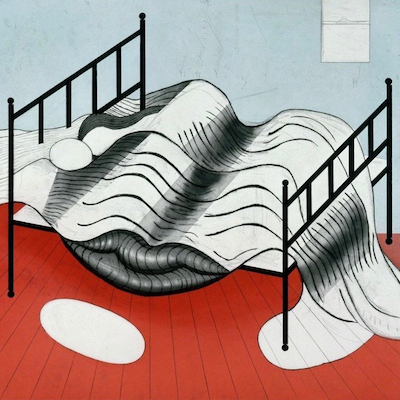
Details
Artist
Styles
Etching and carborundum // Helen Frankenthaler's Parets is a limited edition etching and carborundum print from 1987. The piece exemplifies her abstract expressionist style, using texture and minimal color to create an organic, earthy composition. The central forms, resembling plant-like structures or fossilized impressions, are etched into the surface with deep, textured lines. The reddish-brown tones against a light background evoke a sense of raw, natural material, while the abstraction leaves the forms open to interpretation. The work conveys a quiet energy, inviting viewers to explore its tactile quality and contemplate the balance between natural and abstract forms.
Parets, 1987
form
Medium
Size
129 x 96 cm
- Inches
- Centimeters
Edition
Price
- USD
- EUR
- GBP
Details
Artist
Styles
Etching and carborundum // Helen Frankenthaler's Parets is a limited edition etching and carborundum print from 1987. The piece exemplifies her abstract expressionist style, using texture and minimal color to create an organic, earthy composition. The central forms, resembling plant-like structures or fossilized impressions, are etched into the surface with deep, textured lines. The reddish-brown tones against a light background evoke a sense of raw, natural material, while the abstraction leaves the forms open to interpretation. The work conveys a quiet energy, inviting viewers to explore its tactile quality and contemplate the balance between natural and abstract forms.
- Recently Added
- Price (low-high )
- Price (high-low )
- Year (low-high )
- Year (high-low )
Helen Frankenthaler
Untitled (What Red Lines Can Do), 1970
Limited Edition Print
Serigraph
USD 6,700
Helen Frankenthaler
Valentine For Mr. Wonderful (book), 1995
Limited Edition Print
Intaglio
USD 15,700
Helen Frankenthaler
Valentine For Mr. Wonderful, 1995
Limited Edition Print
Etching And Aquatint
Currently Not Available
What is Postmodernism?
Postmodernism is an art movement that emerged as a reaction against authority and traditional boundaries, seeking to blur the lines between art and everyday life. It aimed to bridge the gap between the cultural elite and the general public by embracing eclectic mixtures of earlier conventions and styles. Postmodernist art often challenges established norms and celebrates diversity, irony, and pastiche, making it a movement that reflects the complexities of contemporary culture.






























